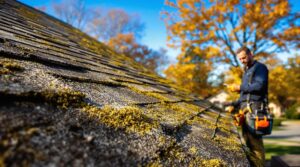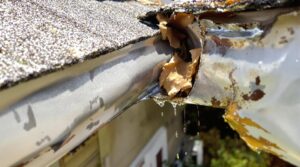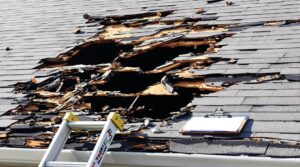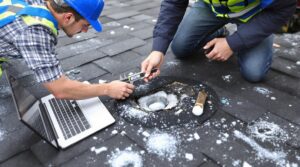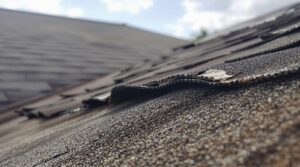Has your insurance company denied your roof damage claim? Don't let that "no" be the final answer! Think of public adjusters as your claims-fighting superheroes, armed with expertise that can turn denials into dollars. They're like having a professional negotiator in your corner, and trust me, the numbers speak volumes – property owners working with public adjusters typically see payouts that are nearly six times larger than those going it alone.
These pros know every trick in the insurance company playbook, from the classic "it's just normal wear and tear" brushoff to the frustrating "poor maintenance" card. But here's where it gets interesting: they fight back with high-tech weapons like thermal imaging and drone surveys, gathering evidence that's hard to dispute. It's like CSI meets property insurance!
Want to know why they're so effective? Public adjusters speak "insurance language" fluently, dissecting policy documents with surgical precision while building airtight cases for your claim. They're masters at spotting coverage opportunities you might miss and documenting damage in ways that demand attention.
Think of them as your roof's best advocate, turning complex claims into clear victories. Whether you're dealing with storm damage, leaks, or other roofing nightmares, these experts know exactly how to navigate the choppy waters of insurance claims to get you the settlement you deserve.
Key Takeaways
Fighting a Denied Roof Claim? Here's Your Public Adjuster Game Plan
Getting pushback from your insurance company over roof damage? You're not alone. Let's crack the code on maximizing your claim with a public adjuster in your corner.
Think of public adjusters as your claims "secret weapon" – they typically secure 5-6 times larger settlements compared to handling it yourself. Why? They speak fluent "insurance-ese" and know exactly how to document your case.
Quick Tips for Success:
- Snap those damage photos ASAP – think Instagram-worthy shots from every possible angle before touching anything
- Don't let insurers play the "poor maintenance" card – public adjusters can help prove storm damage versus wear-and-tear
- Get a policy detective on your side – adjusters dig deep into coverage details others might miss
Remember that roof over your head? It deserves a proper defense. Public adjusters work on contingency (usually 10-25% of the increased settlement), so they're motivated to maximize your payout. They only get paid when you win bigger.
Think of them as your personal insurance translator, damage documenter, and settlement negotiator all rolled into one. They'll tackle the paperwork maze while you focus on protecting your home.
Want insider knowledge? Most successful roof claims come down to timing and documentation – two areas where public adjusters excel at turning denials into dollars.
Understanding Common Reasons for Roof Damage Claim Denials
When homeowners file insurance claims for roof damage, they often encounter denials that stem from various preventable factors. Insurance companies frequently cite pre-existing conditions, inadequate maintenance, or improper installation as grounds for denial, emphasizing the importance of establishing clear denied causation and meeting proof thresholds.
Documentation plays a vital role in claim approval. Insurance providers require thorough evidence of damage, including photographs, professional assessments, and maintenance records.
Failure to prevent additional damage after the initial incident can also result in denial. Additionally, claims may be rejected due to policy limitations, uncovered perils, or time restrictions. Understanding these common denial reasons helps homeowners maintain proper documentation, conduct regular inspections, and take preventive measures to strengthen their claims. Working with a public claims adjuster can lead to settlements 20-50% higher than filing independently.
Why Insurance Companies Reject Valid Roof Claims
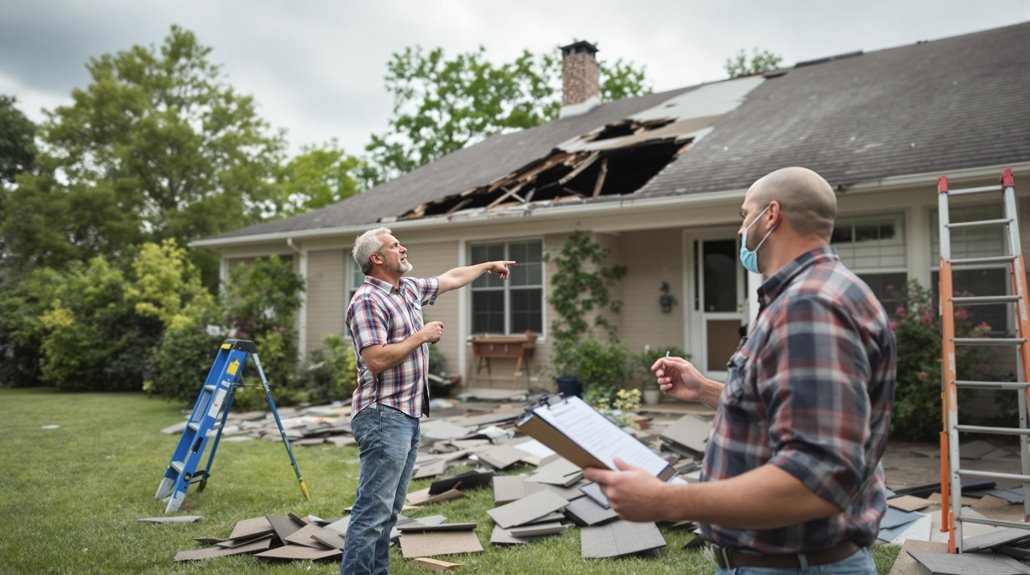
Insurance companies employ various tactics to reject valid roof claims, including citing undisclosed policy exclusions, enforcing strict reporting deadlines, and disputing damage assessments.
Common denial strategies involve attributing damage to pre-existing conditions, citing maintenance neglect, and leveraging ambiguous policy language to minimize payouts.
Understanding these tactics enables property owners to strengthen their claims through thorough documentation, timely reporting, and strategic engagement with qualified public adjusters who can effectively counter insurance company objections.
Since public adjusters help maximize natural disaster claims, homeowners should consider consulting one when facing roof damage denial.
Denial Tactics and Excuses
Understanding the tactics insurance companies employ to deny roof claims is essential for property owners seeking fair compensation. Insurance providers often cite pre-existing damage as grounds for denial, attributing issues to delayed maintenance rather than covered incidents.
They scrutinize maintenance records and inspection histories to identify potential fraudulent practices or negligence that could invalidate claims.
Claims may also be rejected due to inadequate coverage types, installation errors, or procedural shortcomings. Insurance companies frequently deny claims when homeowners fail to maintain appropriate coverage levels for their roof type or when damage results from poor workmanship.
Additionally, strict procedural requirements, including timely filing and proper documentation, must be followed. Failure to take immediate protective measures after damage occurs or provide sufficient evidence can result in claim denials.
Homeowners who work with public adjusters increase their settlement amounts by up to 800% compared to filing independently.
Hidden Policy Exclusion Clauses
Beyond standard denial tactics, property owners face significant challenges with hidden policy exclusion clauses that can invalidate seemingly legitimate roof claims.
Insurance policies often contain complex exclusion wording and coverage omissions that limit or eliminate coverage for specific types of damage. These hidden clauses particularly impact claims involving cosmetic damage, material matching requirements, and installation-related issues.
- Cosmetic damage exclusions may deny claims for surface damage that could compromise structural integrity
- Matching exclusions can prevent full replacement needed for uniform appearance
- Installation error clauses often exclude damages from poor workmanship
- Pre-existing damage limitations require thorough documentation of maintenance
- Standard policy exclusions may restrict coverage to specific named perils only
Understanding these exclusions becomes essential for property owners seeking to protect their interests and navigate the claims process effectively.
Working with public adjusters can increase claim payouts by 20-50% when dealing with complex roof damage exclusions.
Late Reporting Penalty Traps
Property owners frequently encounter late reporting penalty traps when filing roof damage claims, leading to denials of otherwise valid claims by insurance companies. Insurance carriers establish strict notification deadlines, viewing delayed submissions with heightened scrutiny and potential skepticism.
Prompt notification is essential, as delays can complicate damage assessment and raise questions about claim validity. Insurance companies may argue that postponed reporting has worsened the damage or indicates policyholder negligence.
To avoid these pitfalls, property owners should conduct regular roof inspections, maintain detailed documentation, and understand their policy's reporting requirements.
Successful navigation of late reporting challenges requires thorough documentation, timely submission of evidence, and clear communication with insurers. Implementing immediate protective measures and engaging a public adjuster can strengthen the claim's position despite reporting delays.
Most insurance policies require notification within 24-48 hours of discovering property damage to maintain claim eligibility.
The Role of Public Adjusters in Roof Damage Claims
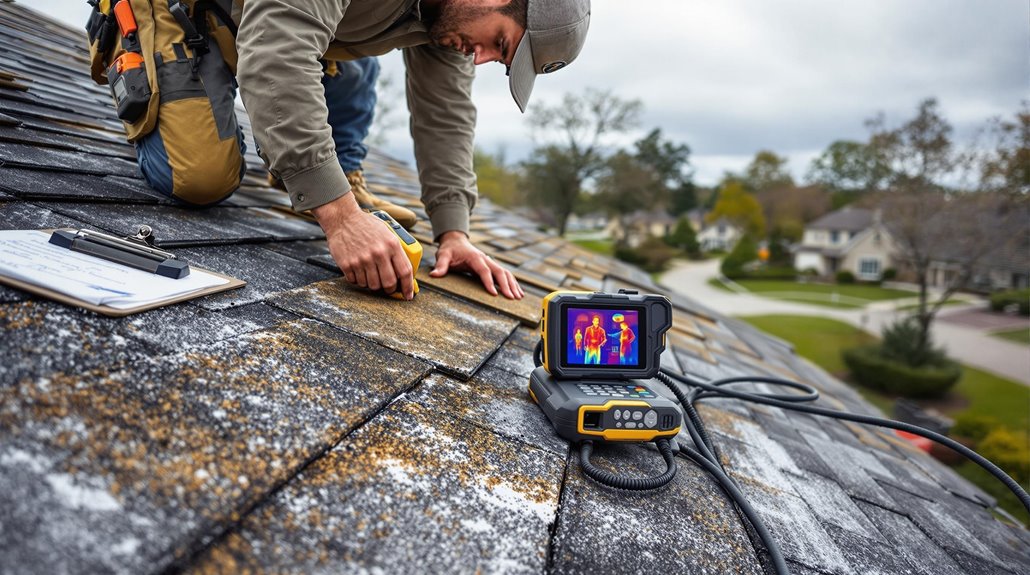
Roof damage claims represent one of the most complex areas of property insurance, making public adjusters invaluable advocates for policyholders seeking fair compensation. These professionals possess essential adjuster qualifications, including expertise in policy interpretation, damage assessment, and negotiation strategies.
Through complete policyholder representation, they conduct thorough evaluations using advanced tools like infrared cameras and moisture meters to document both visible and hidden damage.
- Performs detailed initial assessments to identify all forms of damage
- Documents evidence using specialized equipment and techniques
- Analyzes insurance policies to determine coverage scope
- Prepares complete claim presentations with supporting evidence
- Negotiates with insurance carriers to maximize settlement value
Their expertise particularly shines in identifying concealed damages that might otherwise go unnoticed, ensuring policyholders receive the full compensation entitled under their policies. With settlement increases documented, public adjusters typically help homeowners secure 20% to 50% more in claim payouts compared to self-managed claims.
Essential Documentation for Successful Roof Claims
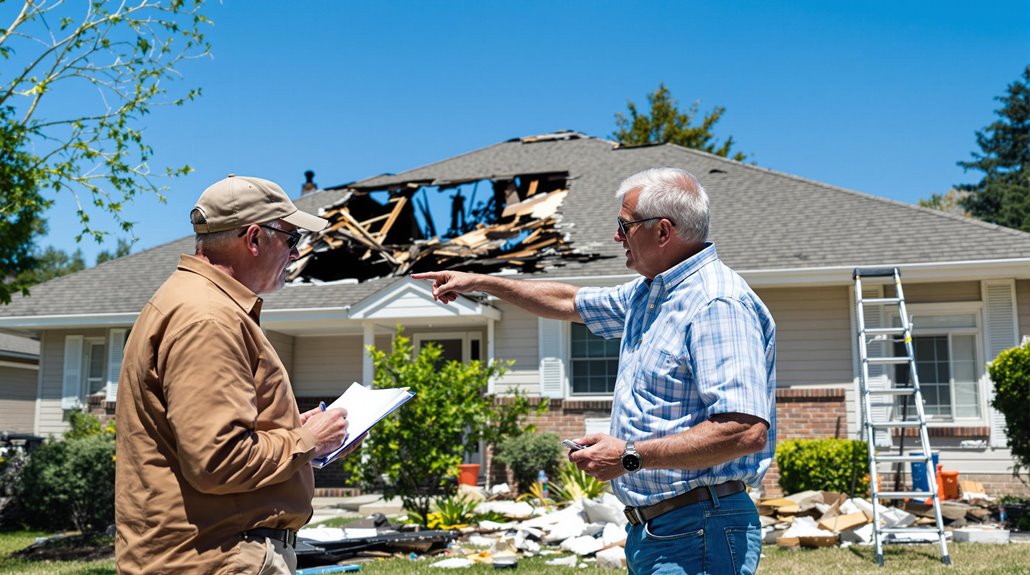
When pursuing insurance claims for roof damage, thorough documentation serves as the cornerstone of successful settlements. Photo timing is essential, requiring immediate capture of damage before temporary repairs begin. A systematic approach to documentation organization guarantees all evidence remains readily accessible for insurance adjusters. Public adjuster services can increase claim settlements by up to 800% when engaged early in the process.
| Documentation Element | Essential Actions |
|---|---|
| Visual Evidence | Capture high-resolution photos from multiple angles |
| Written Records | Detail damage descriptions with dates and locations |
| Supporting Materials | Collect repair estimates and relevant receipts |
| Inspection Reports | Document adjuster findings and recommendations |
Comprehensive documentation strengthens claims by providing clear evidence of damage extent, supporting qualification criteria for coverage, and minimizing potential disputes. This systematic approach demonstrates the full scope of roof damage while meeting insurance companies' requirements for claim validation.
Steps to Take When Your Roof Claim Is Denied
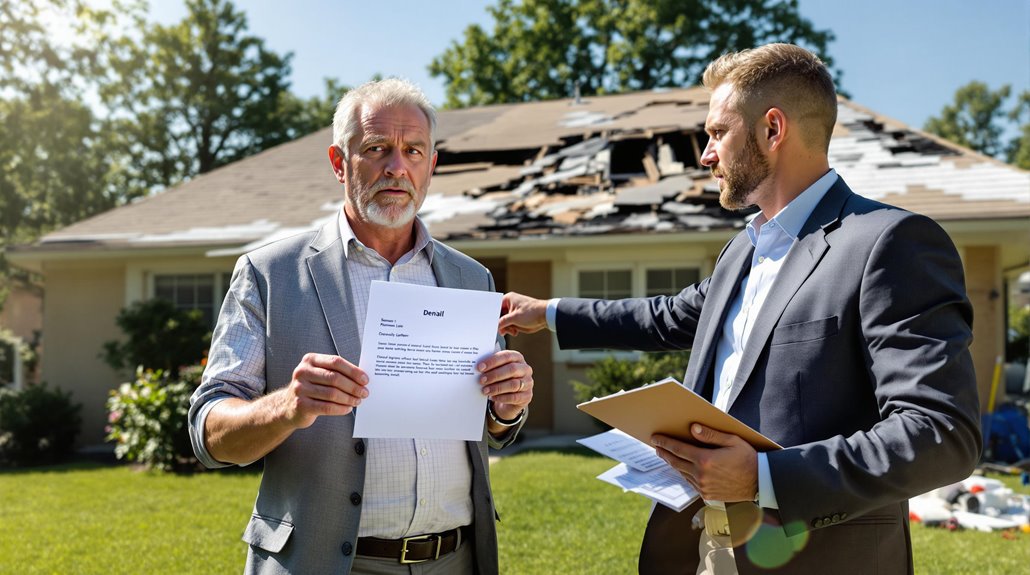
Receiving a denial letter for a roof claim can substantially impact a homeowner's ability to address necessary repairs.
Understanding the claim timeline and denial motives is essential when challenging the insurance company's decision.
Property owners should immediately review their policy details, gather thorough documentation, and consider engaging professional assistance to strengthen their position.
Studies show that working with public insurance adjusters can increase settlement amounts by up to 800% compared to filing independently.
- Review insurance policy language and identify specific reasons for denial
- Document all damage with clear photographs and obtain multiple contractor estimates
- Request a second inspection from the insurance company or independent adjuster
- Consider hiring a public adjuster to evaluate and dispute the claim
- Submit a formal appeal with supporting evidence within required timeframes
The key to overturning a denial often lies in presenting compelling evidence that demonstrates covered damage while following proper dispute procedures.
How Public Adjusters Assess and Document Roof Damage
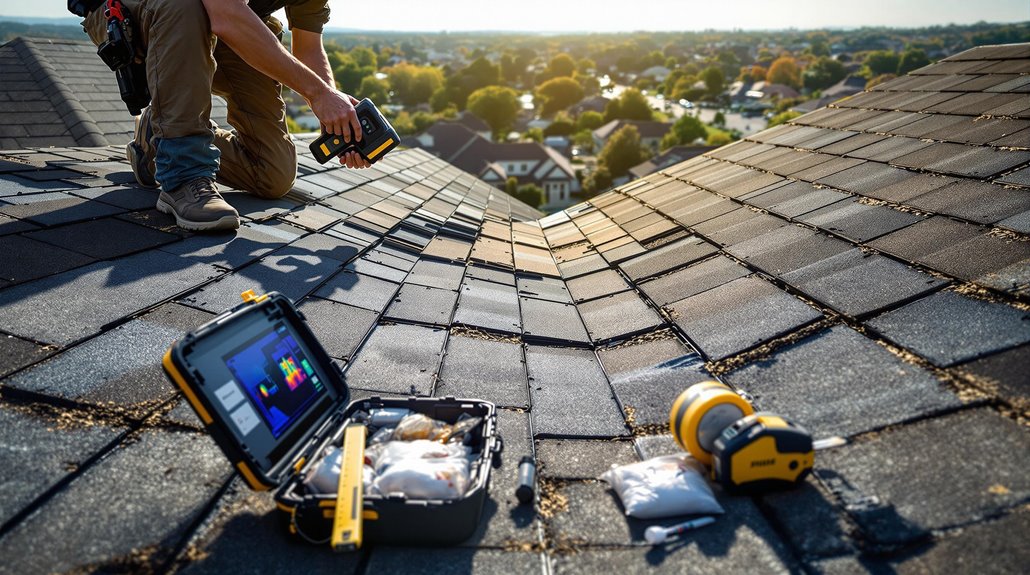
Public adjusters utilize advanced technology, including thermal imaging and drone photography, to conduct thorough roof inspections that reveal both visible and hidden damage patterns.
Following industry best practices, adjusters systematically collect photographic evidence, material samples, and sensor data while maintaining proper chain of custody documentation. Their detailed assessment reports incorporate standardized documentation protocols, measurement data, and digital mapping to create an irrefutable record of roof damage that supports insurance claims.
Unlike insurance company adjusters who must follow claims settlement guidelines, public adjusters represent policyholder interests to maximize claim payouts through detailed documentation.
Technology-Driven Roof Inspections
Modern roof inspections have evolved substantially through the integration of advanced technologies, enabling public adjusters to conduct more thorough and accurate assessments of roof damage.
Through digital analysis and thermal mapping, adjusters leverage sophisticated tools to document and validate insurance claims with unprecedented precision and detail.
- Drone swarms equipped with high-definition cameras capture extensive aerial imagery and detect structural anomalies
- Infrared scanners identify moisture intrusion and insulation deficiencies through temperature differential analysis
- Satellite imaging provides exact measurements and broad overview assessment of large commercial roofs
- Moisture meters and test squares quantify water damage and hail strike density with scientific accuracy
- AI-powered systems analyze collected data to identify patterns and areas requiring immediate attention
These advanced inspection methods help public adjusters increase claim settlements 20-800% compared to cases without professional representation.
Evidence Collection Best Practices
When documenting roof damage for insurance claims, systematic evidence collection serves as the foundation for successful claim resolution. Professional public adjusters implement rigorous photographic standards, capturing time-stamped images from multiple angles to establish damage extent. This thorough approach includes detailed close-ups and wide-angle shots that meet insurance documentation requirements.
| Evidence Type | Collection Method | Documentation Standard |
|---|---|---|
| Visual | High-res Photography | Time-stamped, multi-angle |
| Professional | Licensed Inspections | Detailed written reports |
| Supporting | Weather Data/Records | Chronological organization |
Evidence preservation remains critical throughout the claims process. Public adjusters maintain organized documentation systems, incorporating professional inspection reports, maintenance records, and meteorological data. This structured methodology guarantees all damage evidence is properly cataloged, readily accessible, and effectively presented to insurance carriers for maximum claim value.
Detailed Documentation Standards
Thorough documentation standards form the cornerstone of effective roof damage assessment by public adjusters.
Following strict material requirements and inspection guidelines, adjusters create exhaustive records through high-resolution photography, detailed written descriptions, and systematic damage evaluations. This documentation serves as vital evidence for claim validation and guarantees compliance with insurance policy terms.
- Multi-angle photographic evidence capturing both close-up damage details and wide-angle roof perspectives
- Written assessments detailing damage occurrence, extent, and immediate remedial actions taken
- Exhaustive damage evaluations considering roofing material type, age, and local building codes
- Documentation of Actual Cash Value (ACV) and Replacement Cost Value (RCV) calculations
- Maintenance records and post-repair certificates validating proper care and completed repairs
Maximizing Your Chances of Claim Approval
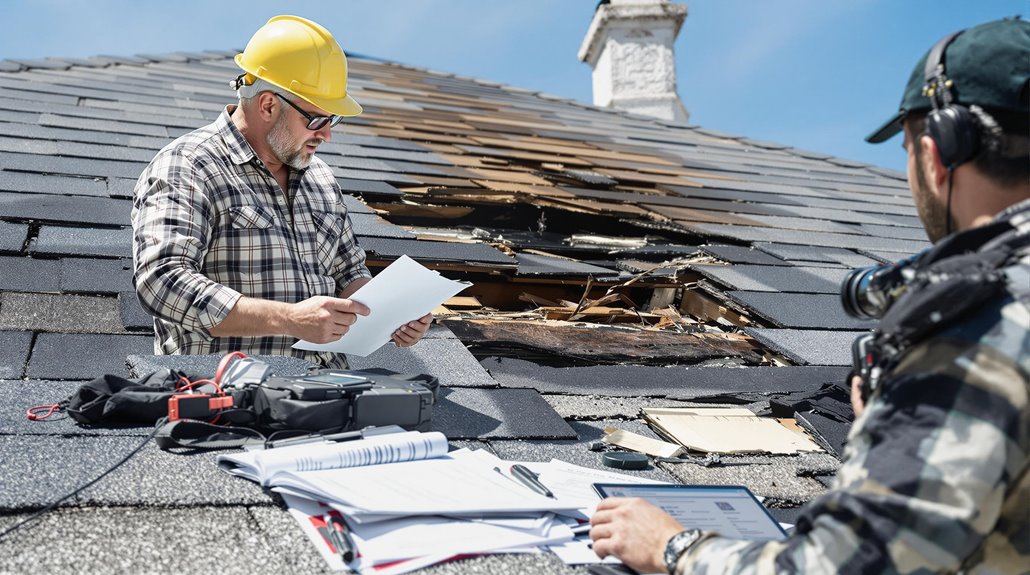
Successfully maneuvering an insurance claim requires a strategic approach that combines thorough preparation, detailed documentation, and precise timing.
To maximize chances of quick approval, property owners should conduct immediate professional inspections following damage, maintain complete photographic evidence, and preserve maintenance records that demonstrate responsible property care.
A systematic approach to documentation, including detailed contractor assessments and witness statements when applicable, substantially enhances positive outcomes.
Property owners should guarantee their insurance adjuster’s inspection is attended by a qualified roofing professional who can identify all damage points. This collaboration is crucial, as a qualified roofing professional can provide insights that may be overlooked by the insurance adjuster. Additionally, understanding the insurance adjuster roof inspection criteria helps property owners ensure that all relevant factors are addressed during the assessment. A thorough inspection can lead to a fair evaluation and increased chances of a successful claim for any needed repairs.
Maintaining clear communication channels with insurers, properly organizing claim documentation, and understanding policy provisions before filing creates a robust foundation for claim success.
Following prescribed deadlines and requirements precisely further strengthens the case for approval.
Advanced Tools and Techniques in Roof Damage Assessment

Modern insurance assessments utilize sophisticated digital inspection equipment to document and analyze roof damage with unprecedented precision.
Advanced thermal imaging devices and moisture meters provide detailed data about water infiltration patterns and structural compromises that may not be visible to the naked eye.
Aerial assessment methods, particularly drone technology equipped with high-resolution cameras, enable thorough documentation of large roof areas while minimizing safety risks and improving inspection efficiency.
Digital Inspection Equipment
Digital inspection breakthroughs have revolutionized roof damage assessment through the integration of advanced vision language models, thermal imaging systems, and AI-powered diagnostic tools.
Modern digital scanners equipped with high-resolution cameras and thermal drones now enable precise detection of structural issues, moisture infiltration, and insulation deficiencies without invasive procedures.
- Advanced Vision Language Models (VLMs) process high-resolution imagery to identify specific types of roof damage
- Thermal imaging technology detects hidden moisture and heat leakage patterns
- Automated segmentation tools mark and analyze damaged areas with precision
- Drone-based systems provide complete aerial evaluations of hard-to-reach areas
- AI-powered diagnostic instruments generate detailed reports through Retrieval-Augmented Generation
These technological advancements guarantee accurate damage assessment while maintaining safety protocols and enhancing the efficiency of insurance claim processing.
Aerial Assessment Methods
Through the integration of unmanned aerial vehicles (UAVs) and advanced deep learning algorithms, aerial assessment methods have transformed traditional roof inspection practices.
These systems employ sophisticated drone navigation techniques to capture high-resolution RGB imagery and thermal mapping data, enabling precise identification of missing shingles, leaks, and structural deficiencies.
The combination of aerial technology and artificial intelligence delivers thorough damage assessments while eliminating safety risks associated with manual inspections.
Advanced systems utilize thermal imaging to detect hidden moisture intrusion and insulation problems, while deep learning models automatically classify roof conditions.
This technology streamlines insurance claims processing through automated damage detection and report generation, incorporating visual segmentation and detailed documentation. The integration of VLMs and audio multimodal models further enhances assessment accuracy and operational efficiency.
Negotiating With Insurance Companies: Expert Strategies

Successfully negotiating with insurance companies requires a thorough understanding of their tactics and a strategic approach to counter them effectively.
Insurance companies often employ delay tactics, lowball offers, and liability disputes to minimize payouts.
Developing a strategic persistence mindset and maintaining extensive documentation helps counteract these tactics. Professional assistance from public adjusters can strengthen negotiating positions through their expertise in claim valuation and industry practices.
- Document all communications and evidence meticulously
- Present clear, well-supported counteroffers backed by evidence
- Maintain patient, professional communication with adjusters
- Leverage expert opinions and contractor estimates
- Review all settlement agreements carefully before signing
When facing resistance from insurers, claimants must remain focused on obtaining fair compensation through systematic negotiation approaches. This includes presenting compelling evidence, responding strategically to lowball offers, and understanding when to seek professional intervention to achieve ideal results.
The Appeals Process: Fighting a Denied Roof Claim
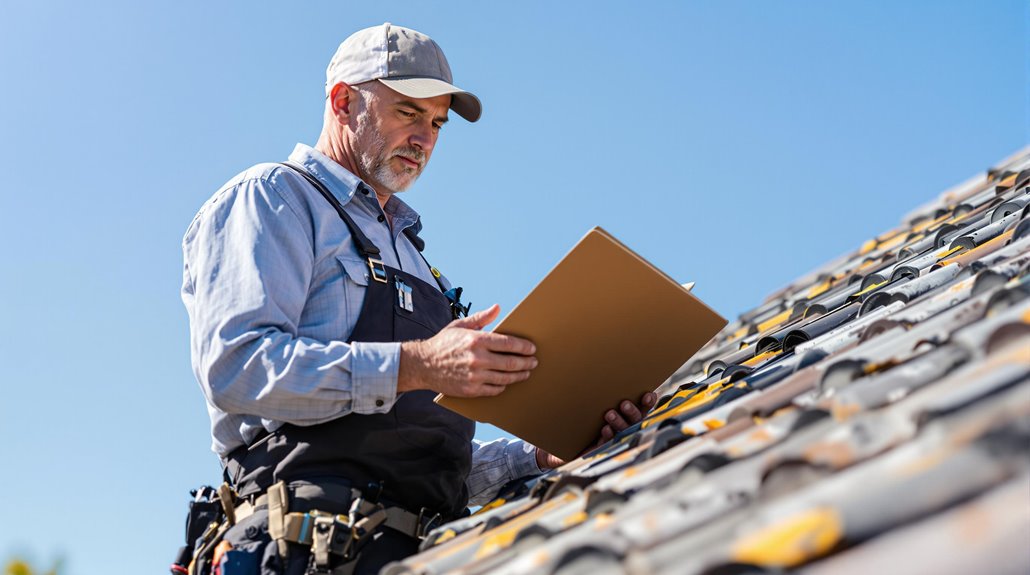
When insurance companies deny roof claims, property owners must follow a structured appeals process to challenge the decision effectively. The first step involves requesting a detailed explanation for the denial and reviewing policy terms thoroughly.
Property owners should then gather extensive evidence, including photographs, professional assessments, and maintenance records to strengthen their appeal presentation.
Meeting appeals deadlines is vital, as late submissions can result in automatic rejection. A public adjuster can provide valuable assistance by conducting re-inspections, preparing documentation, and negotiating with the insurance company. If the initial appeal fails, property owners may consider escalating to legal action.
To prevent future claim denials, maintaining detailed records of regular inspections and repairs, understanding policy coverage, and promptly reporting damage are essential practices.
The Benefits Of Consulting A Public Adjuster
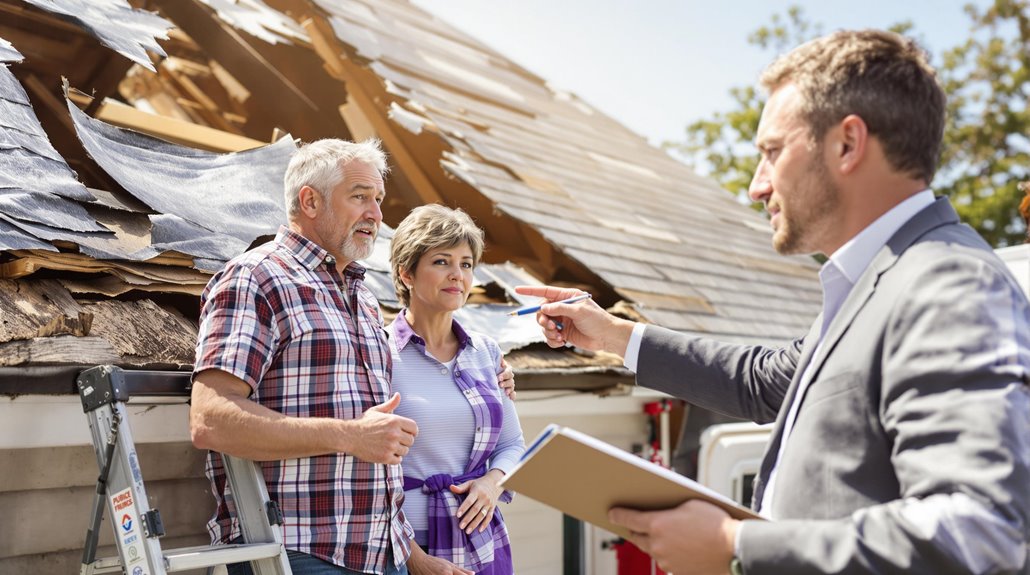
Public adjusters provide invaluable expertise in handling complex insurance claims through their thorough understanding of policies, procedures, and industry practices.
Their objective property damage assessments and detailed documentation helps maximize claim settlements while streamlining the often-complicated claims process for policyholders.
Expertise In Insurance Claims
Consulting a professional public adjuster brings specialized knowledge and expertise to the complex world of insurance claims processing.
Their thorough understanding of policy interpretation enables them to identify all applicable coverages and potential damages.
Through detailed assessments and expert analysis, public adjusters excel at detecting both visible and concealed damages that might otherwise go unnoticed.
Their proficiency in settlement mediation and dispute resolution guarantees policyholders receive fair compensation within policy terms.
- Conducts thorough policy reviews to maximize coverage benefits
- Identifies hidden damages through exhaustive property assessments
- Documents and presents claims with compelling supporting evidence
- Negotiates with insurers using proven settlement strategies
- Resolves disputes by leveraging deep understanding of policy terms and coverage limits
Objective Damage Assessment
A fundamental advantage of obtaining an objective damage assessment through a professional adjuster lies in their meticulous approach to property evaluation and documentation. Using visual guides and extensive damage mapping techniques, public adjusters conduct thorough inspections that identify both obvious and concealed structural issues.
The assessment process incorporates detailed photographic evidence, video documentation, and written reports that strengthen the claim's validity.
Public adjusters systematically evaluate all damage components, including hidden complications like moisture intrusion or developing mold conditions. This methodical documentation serves as essential evidence during settlement negotiations, providing a solid foundation for dispute resolution. Their unbiased evaluation guarantees accurate damage valuation, preventing underestimation by insurance company adjusters and supporting maximum claim recovery for property owners.
Streamlined Claim Process
Beyond thorough damage assessment, engaging with a public adjuster brings significant advantages to the claims management process. Public adjusters implement process optimization techniques to accelerate claim resolution while minimizing policyholder stress.
Their expertise in documentation, policy interpretation, and negotiation guarantees efficient handling of complex insurance matters, resulting in claim acceleration and streamlined outcomes.
- Professional documentation management with organized claim files and exhaustive reports
- Expert navigation of insurance policy requirements and exclusions
- Proactive communication with insurance companies to prevent delays
- Strategic negotiation to expedite claim settlements
- Complete handling of administrative tasks, allowing policyholders to focus on recovery
Public adjusters serve as dedicated advocates, managing every aspect of the claims process while providing policyholders with expert representation and peace of mind throughout the settlement journey.
Higher Claim Payouts & Settlements
The decision to retain a public adjuster can yield substantially higher claim settlements, with studies showing an average of 574% larger payouts compared to self-managed claims. These payout statistics demonstrate the value of professional claims expertise in maximizing insurance settlements for roof damage.
Public adjusters leverage their exhaustive understanding of insurance policies and damage assessment protocols to document losses thoroughly and negotiate effectively with insurance carriers. Their specialized knowledge enables them to identify covered damages that property owners might overlook, leading to significant settlement improvements.
Working solely for the policyholder's interests, these professionals guarantee fair compensation while removing emotional factors from negotiations. The contingency-based fee structure, typically ranging from 10-25% of the claim amount, aligns their objectives with achieving maximum possible settlements for their clients.
About The Public Claims Adjusters Network (PCAN)
Professional adjusters worldwide unite through Public Claims Adjusters Network (PCAN), forming an extensive alliance of licensed and certified professionals dedicated to policyholder advocacy.
The network structure enables coordinated responses to large-scale disasters while maintaining consistent service standards across regions.
Member qualifications undergo rigorous verification to guarantee expertise in policy interpretation, damage assessment, and claims negotiation.
- Facilitates knowledge sharing and best practices among certified adjusters
- Provides standardized training and professional development resources
- Maintains quality control through peer review and performance monitoring
- Coordinates rapid response teams for catastrophic events
- Implements unified documentation and reporting protocols
PCAN members leverage collective expertise to strengthen policyholder representation, guaranteeing thorough claim evaluations and equitable settlements through collaborative support and shared resources.
Frequently Asked Questions
How Much Does Hiring a Public Adjuster Typically Cost for Roof Claims?
Public adjusters typically charge 3-30% of claim settlements, with fee structures varying by state regulations. Payment options include contingency-based percentages, with some states capping fees at 10-20% of settlements.
Can I Switch to a Public Adjuster After Initially Filing Independently?
"Better late than never" applies when switching to a public adjuster post-filing, though timing restrictions and coverage limitations may affect the claim's progression. Most states allow changes during active claims.
What Percentage of Denied Roof Claims Get Approved After Hiring Adjusters?
While exact reversal statistics vary, industry data suggests public adjusters help overturn 15-40% of initially denied roof claims, with approval rates influenced by damage documentation and policy specifics.
How Long Does a Public Adjuster Need Access to My Property?
Initial inspections typically require 1-2 hours, while complex claims may need multiple visits over 2-3 weeks. Property scheduling depends on timeline expectations, documentation requirements, and insurer coordination.
Are Public Adjusters Available for Emergency Roof Assessments Outside Business Hours?
Public adjusters typically have limited emergency availability for overnight inspections. While some firms offer after-hours services, most assessments are conducted during standard business hours unless specifically contracted for 24/7 coverage.
References
- https://oakleafe.claims/roof-leak-insurance-claim/why-insurance-wont-pay-for-roof-damage/
- https://www.roof-crafters.com/learn/what-public-adjuster
- https://www.galianroofing.com/educational-center/2024/july/how-does-a-public-adjuster-help-with-roofing-cla/
- https://rescue-my-roof.com/blog/steps-after-homeowners-insurance-denies-roof-claim/
- https://www.stormlex.com/insurance-dispute-attorney-public-adjusters/
- https://www.restorationroofing.com/8-reasons-why-roof-claims-are-denied-by-insurance/
- https://abc7chicago.com/home-insurance-companies-claim-illinois-department-of-complaints/14036968/
- https://brahmaroofingconstruction.com/6-reasons-why-roof-claims-are-denied/
- https://www.summitroofingandrestoration.com/dickson/blog/6-reasons-roofing-insurance-claims-are-denied/
- https://uphelp.org/ask-an-expert/question/looking-for-advice-claim-denial-for-roof-damage-from-hail/
